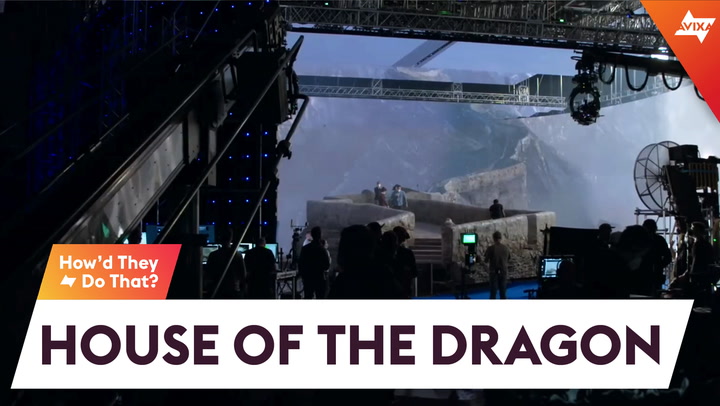On July 14, the world’s largest LED virtual production (VP) volume was officially unveiled in Deqing, establishing a new benchmark in immersive entertainment technology. Developed through a strategic collaboration between virtual production specialists Versatile Media and global LED manufacturer Absen, the LED virtual stage features a 270-degree curved LED wall spanning 50 meters in diameter and 12 meters in height, with a total floor area of 5,000 square meters.
The LED display alone covers over 1,700 square meters, equivalent to the size of four basketball courts, making it the largest single-screen pixel volume ever built. This enormous VP volume is now the largest of its kind worldwide, marking a significant shift in how films, commercials, and digital content are created.
The project, dubbed “Absen x Versatile,” is more than just an impressive technical feat. It demonstrates the growing demand for LED volume stages in global production hubs, marking China’s increasingly prominent role in shaping the future of media creation.
The LED volume integrates next-generation LED technology to support high-end virtual production. Key technical highlights include: HDR rendering for dynamic, lifelike visuals, accurate color reproduction to match real-world tones, high frame and refresh rates for smooth motion capture, moire and aliasing suppression, even in close-up shots, and fine pixel pitch and high resolution for clean, lifelike image quality on camera. These innovations deliver cinema-grade image fidelity while optimizing for seamless interaction between camera tracking, lensing, and lighting.
The wraparound LED structure is complemented by an overhead ceiling composed of Absen’s MR series panels, enabling dynamic lighting that mimics natural reflections and responds in real-time to camera movements. Together, the wall and ceiling create a complete, immersive shooting environment that drastically reduces the need for green screens, post-production effects, and location logistics.
A Brief History of LED Volumes
Virtual production using LED volumes exploded into the mainstream following the success of Disney’s The Mandalorian, where filmmakers used a 20-foot-tall LED wall to render live digital environments. Unlike green screens, LED volumes allow actors and directors to see the environment during filming, improving lighting, actor performance, and overall workflow.
Early adopters quickly recognized the potential: immersive environments without travel, real-time control over lighting and time-of-day settings, and an all-digital backlot scalable to any scene imaginable. Scene changes can be completed within minutes, and when paired with immersive 8K LED walls and realistic lighting, the shooting experience becomes immersive and authentic. Studios across North America, Europe, and Asia began building their own volumes. However, the Nanjing facility takes things to an entirely new scale, pushing the boundaries of engineering and storytelling.
Why This Matters
From a production standpoint, larger volumes enable more complex scenes, more believable parallax movement (as the camera shifts perspective), and greater flexibility in shooting multiple scenes from different “locations” in a single day. For example, one scene can be set in the Tunisian Desert, and only minutes later, the setting shifts to the Brazilian rainforest, and then to the Himalayas – all without the travel and location expenses or the required permits, which can get hung up in bureaucracy for months.
The 1.5mm pixel pitch is particularly notable. While tighter pitches are often associated with close-range viewing applications, such as control rooms or boardrooms, their use in this volume means sharper, crisper visuals, which is an essential detail for high-resolution film work.
Virtual Production’s Future
This launch underscores a broader trend: the shift from traditional location shooting to digital set creation. Whether for big-budget blockbusters, independent films, corporate commercials, or gaming cinematics, VP volumes provide an unprecedented level of control.
The scale and scope of the Nanjing volume could also drive new interest in co-productions and remote filmmaking. Studios around the globe may now look to China not just as a market for content but as a hub for creating it—especially when virtual environments eliminate physical borders altogether.
Virtual production isn’t without its challenges. Costs are high, the learning curve for directors and crews remains steep, and not all creative visions translate easily into a digital volume environment. However, as tools become more intuitive, costs inevitably come down, and hardware becomes more scalable, experts believe these facilities will become as standard as traditional soundstages once were.
📖Recommended Reading: The Past, Present, and Future of Virtual Production
The Takeaway
The unveiling of the world’s largest LED virtual production volume isn’t just a technical achievement—it’s a glimpse into what the next decade of filmmaking might look like. With LED volumes becoming more advanced and accessible, content creation is entering a new era of flexibility, immersion, and visual storytelling.
And as production teams across the globe take note of what’s now possible in China, one thing is clear: the future of film may be built pixel by pixel, inside four virtual walls.
Read the full story here: World’s Largest Monolithic LED VP Stage Opens in China
Image courtesy of Absen.
